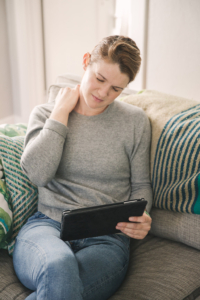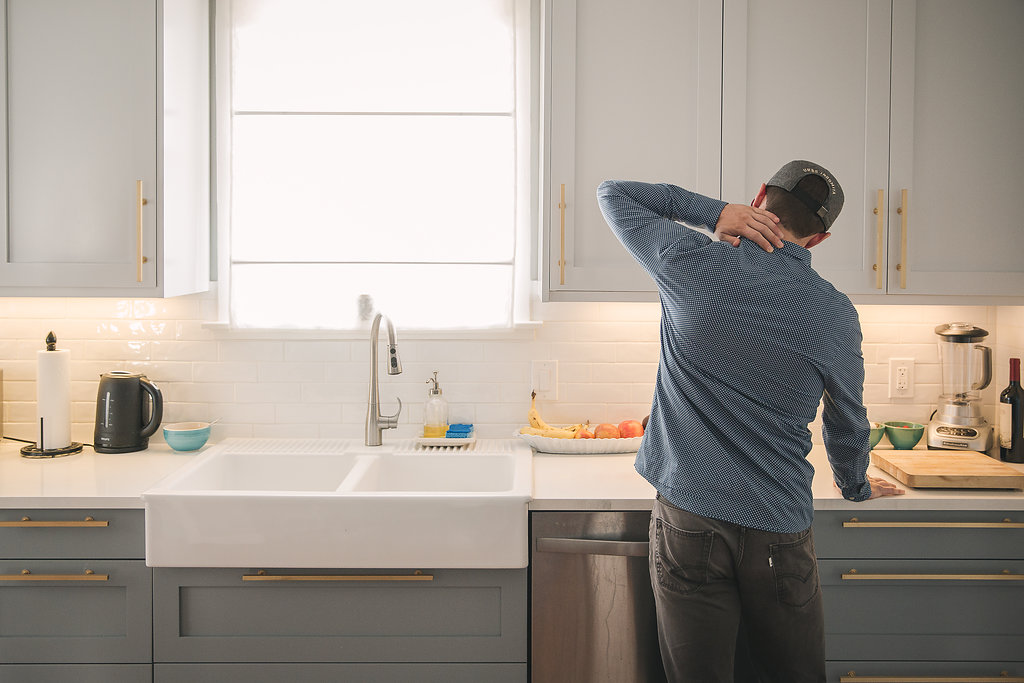At a glance: In Turn Aches And Tension Into Everyday Wins, we reframe tight spots as signals to listen, soften, support, and feel better. Stack the small wins by pairing a tailored massage with simple daily moves.
Turn Aches And Tension Into Everyday Wins
Make every ache and tight spot a signal, not a setback.
You’re Not “Broken.” Your Body’s Talking.
That stiff neck after a long drive. The low‑back grumble when you stand up. The knot that shows up when life gets hectic. Those sensations aren’t flaws—they’re messages. When we learn to listen and respond, we turn everyday aches and tension into everyday wins.
The Reframe: Aches and Tension Are Protective
Your nervous system’s first job is to keep you safe. It uses discomfort to get your attention so you can change something. It’s a cue to adjust your posture, workload, breathing, or pace. When we treat sensations of aches and tension as signals instead of setbacks, we can make small, helpful adjustments before little issues become big ones.
Where Massage Fits (and What’s Realistic to Expect)
Massage can’t erase every problem, but it’s a powerful reset for many people. Sessions often provide short‑term relief for common pain areas (think low back and neck) 1, help downshift an overactive nervous system, and make movement feel easier. Consistency matters. Relief tends to stack when massage is combined with movement 2, hydration, and stress management. (We’ll show you how below.)

Our Three‑Part Playbook: Listen → Soften → Support
A practical way to respond to aches and tension in real time
- Listen
Name it: “Right shoulder ache, 4/10, worse after laptop time.” Naming reduces fear and gives you a target.
Notice patterns: time of day, tasks, or stress spikes. Jot a note on your phone; bring it to your session. - Soften
60‑second breath break: in through the nose 4 counts → out 6–8 counts, shoulders heavy. Repeat for 5 cycles.
Micro‑moves:
Neck: slow “yes/no/maybe” nods; stop at mild stretch, breathe.
Back/hips: stand, hinge at hips, gentle sway; or figure‑4 hip stretch at the chair.
Home self‑massage: shower warmth + a tennis ball against the wall for upper back/hips; 60–90 seconds per spot, easy pressure, avoiding bony areas and joints.
Book the reset: We’ll tailor pressure and techniques (from gentle relaxation to focused therapeutic work) to what your body’s asking for this week. - Support
Hydrate & protein: tissues love fluid and building blocks.
Move a little, daily: 10–20 minutes of walking or light strength work keeps blood flowing and joints happy.
Sleep cues: consistent bedtime + dark, cool room; light stretching or breath work before bed.
Desk setup: screen at eye level, feet flat, elbows ~90°. Set a 45–60‑minute “get up and move” timer.
What a Session with Us Looks Like
Clear goal‑setting: You talk; we listen. We’ll prioritize 1–2 areas so change is noticeable.
Nervous‑system first: Expect unhurried breathing, slow starts, and techniques chosen to calm overprotective muscles before deeper work.
Skill‑share: Ask your massage therapist to send you home with personalized stretches or exercises that extend your results.

The 7‑Day “Everyday Wins” Challenge
Day 1: Book your reset.
Day 2: Add one breath break before lunch.
Day 3: Stretch or strengthen the area that’s speaking up.
Day 4: Walk 15 minutes (or split 5/5/5).
Day 5: Repeat your breath break + one tennis‑ball spot.
Day 6: Lights‑out 30 minutes earlier.
Day 7: Check in with your body. What’s easier? What needs attention next week?
Real Talk About Results
Relief is rarely a single grand slam; it’s a string of small, consistent wins. Massage helps many people feel and move better, often for days, especially when it’s paired with simple home habits. If something feels sharp, sudden, or is paired with red flags (numbness, severe swelling, fever, unexplained weight loss), see a medical professional first. We’re great teammates, and we respect the role of your healthcare providers.
Sessions often provide short‑term relief for common low‑back pain1 and pairing massage with movement leads to better outcomes over time2.
Ready to Turn Aches & Tension into Momentum?
Let’s map your first three wins. Book An Appointment Now!
FAQ: Aches & Tension
What causes everyday aches and tension?
Aches and tension often reflect protective responses from your nervous system to posture, workload, stress, sleep, and hydration. Treat them as signals to adjust, not as proof that something is broken.
Can massage help with aches and tension?
For many people massage provides short‑term relief for common areas like the neck and low back and helps downshift an overactive nervous system. Results stack best with movement, stress management, and sleep.
How often should I get a massage for tension relief?
Consistency beats intensity. Many clients do best with 2–4 sessions in their first month to build momentum, then maintain every 3–6 weeks alongside simple daily habits.
When should I see a medical professional first?
If pain is sharp or sudden, or you notice red flags like numbness, severe swelling, fever, or unexplained weight loss, consult a medical professional before massage.
What daily habits reduce aches and tension?
Brief breath breaks, gentle micro‑moves, hydration and protein, a 10–20 minute walk most days, and a consistent sleep routine can all reduce baseline tension.
References
-
Cherkin DC, et al. Annals of Internal Medicine.
. Randomized trial: massage improved function/symptoms at ~10 weeks vs usual care.
PubMed
↩︎ -
Skillgate E, et al. Musculoskeletal Science and Practice.
. STONE RCT: short‑term pain gains; exercise led by 26 weeks—supports pairing massage with movement.
PubMed
↩︎
Other articles you might also be interested in:
10 Best Foods to Eat on Massage Day
Tag: Aches and Tension

